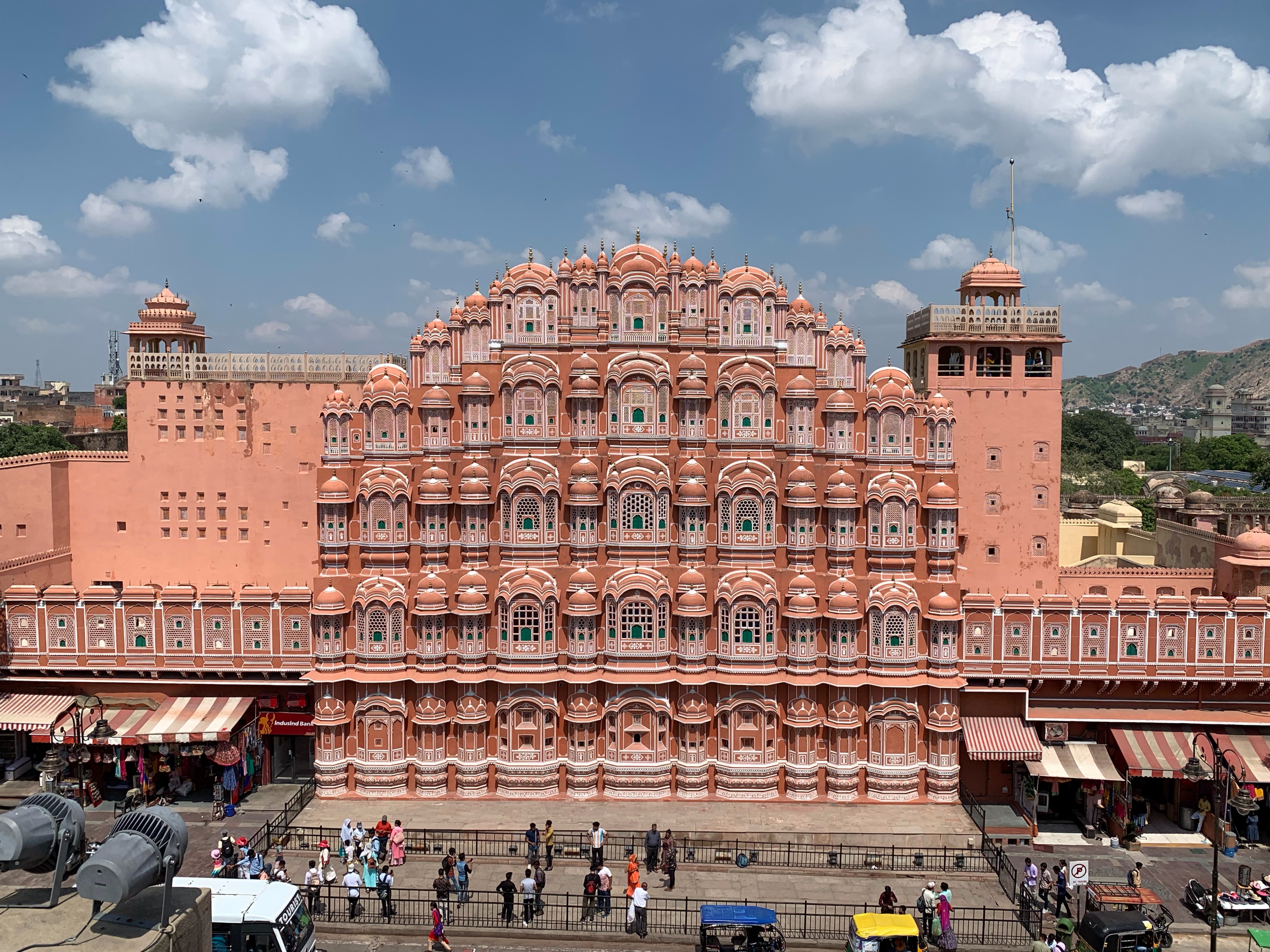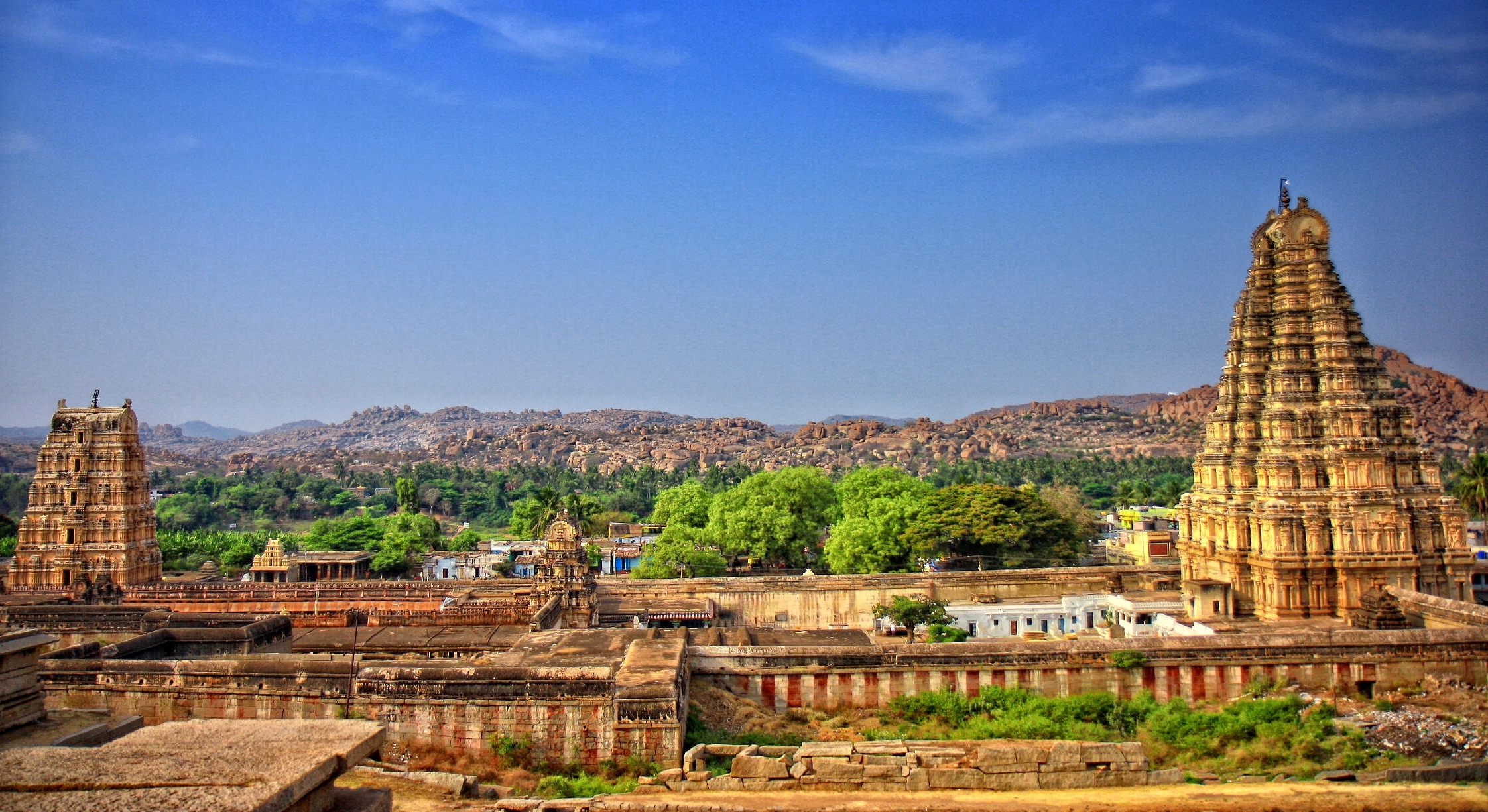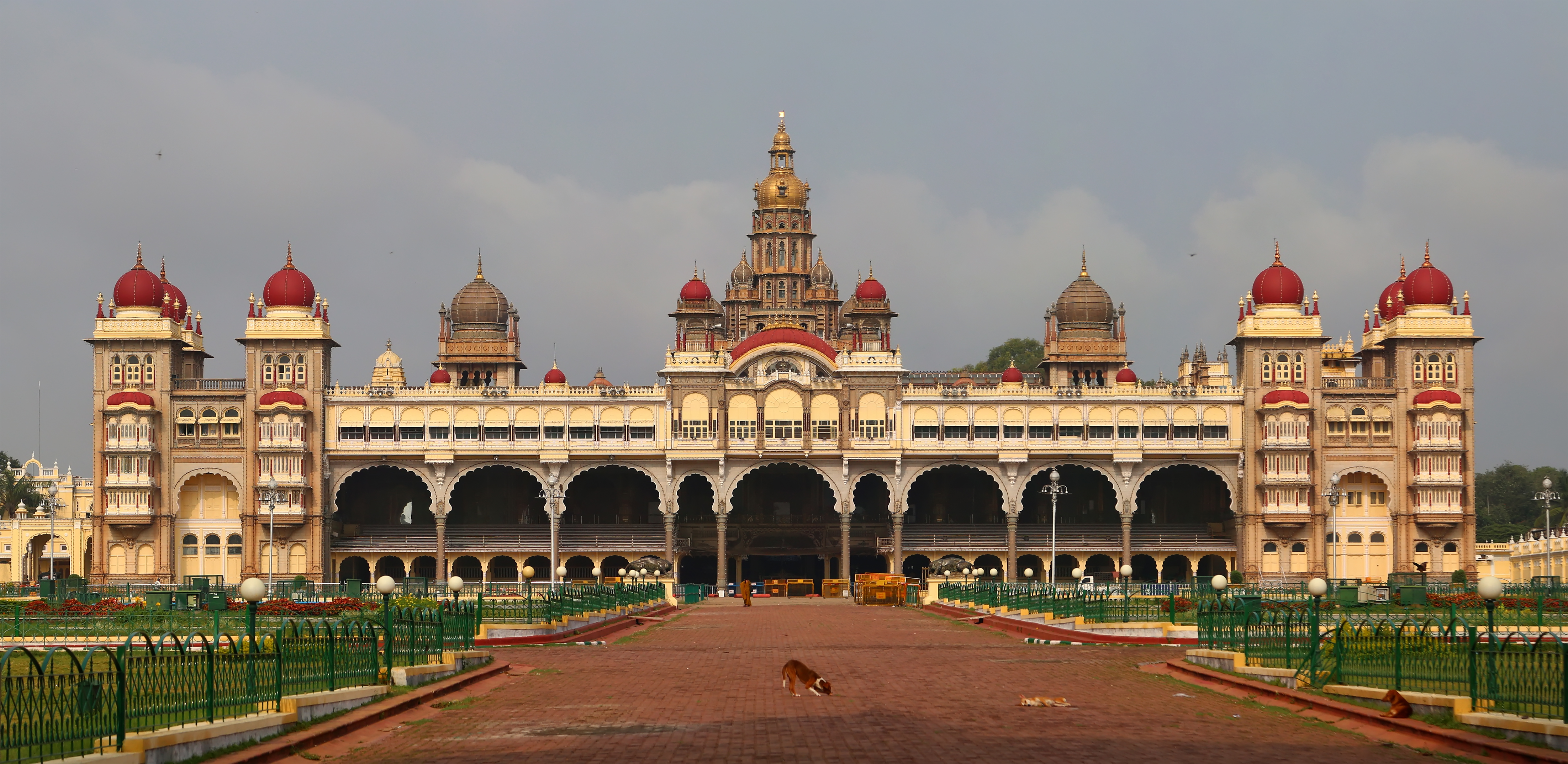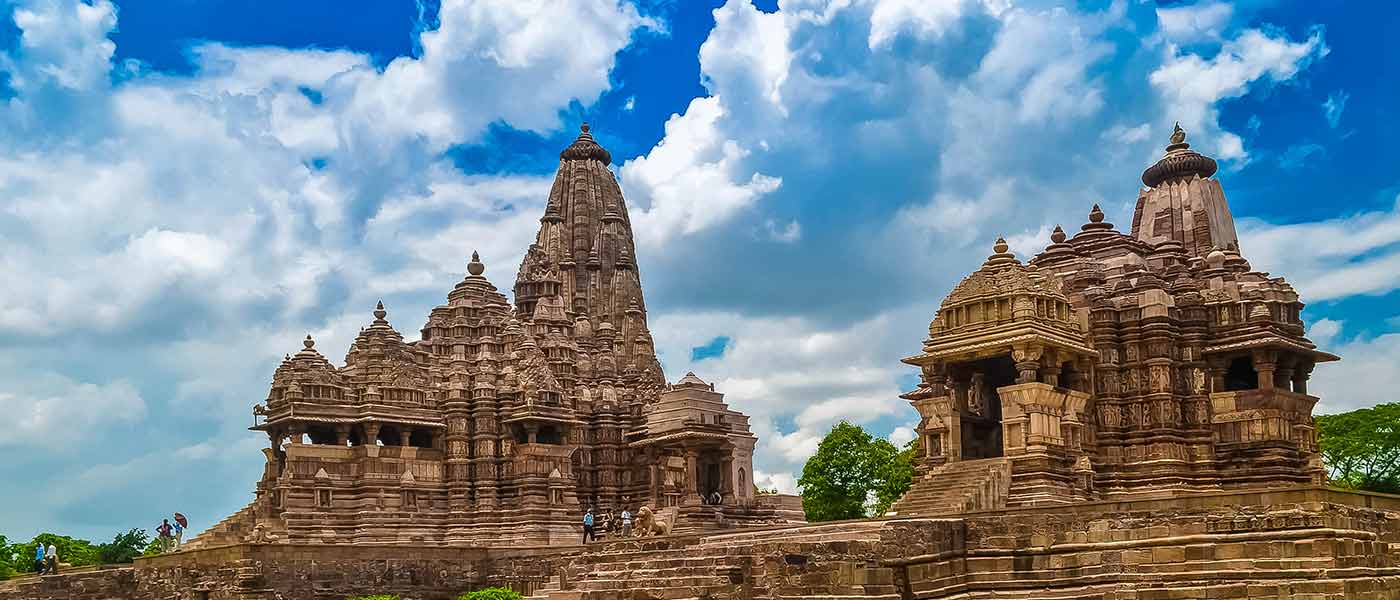India, with its rich tapestry of history and cultural heritage, boasts an array of landmarks and historical sites that narrate tales of centuries gone by. From majestic forts to intricate temples, this guide invites you to embark on a virtual expedition, exploring the architectural marvels that stand testament to the grandeur of India’s past. Ministry of Tourism offers information on tourist destinations, travel advisories, and important guidelines for visitors. It’s a valuable resource for planning your itinerary and staying informed about travel related updates.
Yes! It’s Incredible India.
#1. The Taj Mahal: A Testament to Eternal Love

Undoubtedly one of the most iconic landmarks globally, the Taj Mahal graces the banks of the Yamuna River in Agra. Built by Emperor Shah Jahan in memory of his beloved wife Mumtaz Mahal, this pristine white marble mausoleum is a masterpiece of Mughal architecture. Explore the symmetrical gardens, intricate carvings, and the poignant love story that envelops this UNESCO World Heritage Site.
#2. Jaipur’s Hawa Mahal: The Palace of Winds

Venture into the heart of Jaipur, the Pink City, and marvel at the Hawa Mahal, or Palace of Winds. This unique five story structure, adorned with 953 windows, was designed to allow royal women to observe street festivities while maintaining their privacy. The intricate latticework and pink sandstone facade make it a captivating sight, capturing the essence of Rajasthan’s architectural splendor.
#3. Delhi’s Red Fort: A Symbol of Power and Prestige

Delhi, the capital city, is home to the imposing Red Fort, a UNESCO World Heritage Site. Built by Emperor Shah Jahan, the fort served as the main residence of the Mughal emperors for over 200 years. Explore its grand halls, intricate marble inlays, and the famous Diwan i Khas, where historic decisions were once made. The Red Fort is a living testament to India’s imperial history.
#4. Varanasi’s Ghats: Steps to Spiritual Awakening

Journey to the spiritual heart of India, Varanasi, where the Ghats along the Ganges River paint a vivid picture of religious rituals and ancient traditions. Each Ghat holds a unique significance, whether it’s the spiritual fervor at Dashashwamedh Ghat or the tranquility of Assi Ghat. Varanasi’s Ghats are not just steps leading to the river but are a gateway to the soul of India.
#5. Ajanta and Ellora Caves: Makes India More Incredible.

Step back in time at the Ajanta and Ellora Caves in Maharashtra, a UNESCO World Heritage Site showcasing rock cut caves adorned with intricate sculptures and paintings. Dating back to the 2nd century BCE, these caves represent a harmonious blend of Buddhist, Jain, and Hindu art. Explore the ancient caves to witness the evolution of religious artistry spanning several centuries.
#6. Hampi’s Ruins: A Frozen Tale of Vijayanagara Empire

Delve into the ancient city of Hampi, a UNESCO World Heritage Site in Karnataka, where the ruins of the Vijayanagara Empire tell a story of grandeur and prosperity. The Virupaksha Temple, the Elephant Stables, and the iconic Stone Chariot are among the remnants of a bygone era. Hampi’s surreal landscape transports visitors to a time when the city was a flourishing cultural and religious hub.
#7. Qutub Minar: Delhi’s Towering Glory

In the heart of Delhi stands the Qutub Minar, an impressive testament to Indo Islamic architecture. Built in the 12th century, this UNESCO World Heritage Site boasts the tallest brick minaret in the world. Marvel at the intricate carvings, the Quwwat ul Islam Mosque, and the iron pillar that has stood the test of time. Qutub Minar stands tall as a symbol of Delhi’s historical legacy.
#8. Mysore Palace: Regal Opulence in the City of Palaces

Visit the city of Mysore in Karnataka to witness the grandeur of the Mysore Palace, an architectural marvel that blends Indo Saracenic, Rajput, Hindu, and Gothic styles. Illuminated by thousands of bulbs during the Dasara festival, the palace comes alive in a spectacle of lights and colors. Explore the ornate halls, royal courtyards, and the opulent Durbar Hall that transports you to a time of royal splendor.
#9. Fatehpur Sikri: A Ghost City Frozen in Time

Just a short drive from Agra, Fatehpur Sikri stands as a well preserved ghost city, showcasing the architectural brilliance of Emperor Akbar. Explore the Jama Masjid, the Buland Darwaza, and the Panch Mahal as you wander through the deserted courtyards. Fatehpur Sikri is a poignant reminder of a once thriving capital that was abandoned due to water scarcity.
#10. Khajuraho Temples: A Celebration of Sensuality and Spirituality

The Khajuraho Group of Monuments in Madhya Pradesh boasts intricately carved temples adorned with explicit sculptures that celebrate human sensuality and spiritual pursuits. Built between 950 and 1050 CE, these temples are a UNESCO World Heritage Site, offering a fascinating glimpse into the artistic and cultural ethos of medieval India.
#11. Jaisalmer Fort: The Golden Citadel of Rajasthan

Travel to the heart of the Thar Desert, and you’ll discover the majestic Jaisalmer Fort, often referred to as the “Golden Fort” due to its yellow sandstone construction. This living fort houses a bustling market, ancient Jain temples, and intricately carved havelis, providing a glimpse into the royal history of Rajasthan. The stunning architecture and the panoramic views of the desert make Jaisalmer Fort a must visit destination for history enthusiasts and architecture aficionados.
#12. Rani Ki Vav: A Subterranean Stepwell in Gujarat

Hidden in the town of Patan in Gujarat, Rani Ki Vav is a UNESCO World Heritage Site and an architectural marvel. This intricately designed stepwell, built in the 11th century, served as both a water source and a place of religious ceremonies. The stepwell is adorned with over 500 principal sculptures and numerous smaller ones, depicting mythological and religious themes. Rani Ki Vav is a testament to the advanced engineering and artistic prowess of ancient India.
Travel Tips for Exploring India’s Landmarks and Historical Sites
Now that you’re inspired to embark on a journey through India’s iconic landmarks and historical treasures, it’s essential to plan your trip wisely. Here are some travel tips to ensure a smooth and enriching experience:
1. Plan Ahead and Prioritize:
Before setting out on your adventure, create a well thought out itinerary. India is vast and diverse, so prioritize the landmarks that resonate most with your interests and preferences.
2. Respect Local Customs and Traditions:
India is known for its rich cultural tapestry, and each landmark often holds religious or cultural significance. Dress modestly, remove your shoes when entering temples or mosques, and be mindful of local customs to show respect.
3. Choose the Right Time to Visit:
India experiences diverse climates, so consider the best time to visit each destination. For example, the Golden Triangle (Delhi, Agra, Jaipur) is ideal in the winter months, while southern destinations like Kerala are pleasant during the monsoon.
4. Embrace Local Cuisine but Be Cautious:
Indian cuisine is a delight for the taste buds, but be cautious about street food hygiene. Opt for reputable restaurants, and drink bottled or purified water to avoid any health concerns.
5. Engage with Local Guides:
Many landmarks have local guides who can provide invaluable insights into the history and culture. Engaging with them enhances your understanding and appreciation of the site.
6. Secure Your Belongings:
Be cautious of pickpockets, especially in crowded areas. Keep your belongings secure, and consider using anti theft bags or money belts for added safety.
7. Transportation Planning:
India has a well connected network of trains, buses, and domestic flights. Plan your transportation in advance, especially for long journeys, and consider booking tickets online to secure your seats.
8. Learn Basic Local Phrases:
While English is widely spoken, learning a few basic phrases in Hindi or the local language of the region you’re visiting can enhance your interactions and make your experience more immersive.
9. Stay Hydrated and Take Breaks:
India’s diverse landscapes can be physically demanding. Stay hydrated, take breaks, and consider the weather conditions when exploring outdoor landmarks.
10. Be Mindful of Photography Rules:
Some historical sites may have restrictions on photography, especially inside temples or museums. Always respect these rules to preserve the integrity of the site.
11. Stay Informed About Entry Fees:
Many landmarks have entry fees, and some may offer discounts for students or specific categories. Research entry fees in advance to avoid any surprises.
12. Experience Local Transportation:
Consider exploring cities on local transportation like tuk tuks or cycle rickshaws. It not only provides a unique experience but also supports local livelihoods.
13. Pack Accordingly:
Depending on the regions you’re visiting, pack essentials such as comfortable walking shoes, sunscreen, a hat, and light clothing. If you’re visiting religious sites, carry a scarf to cover your head if required.
14. Stay Informed About Local Events:
Check for local events, festivals, or special occasions that may impact your travel plans. Participating in these events can add a cultural dimension to your trip.
15. Be Open to Cultural Exchange:
India is a country of diverse cultures and traditions. Be open to cultural exchanges, interact with locals, and savor the enriching experiences that come from learning about different ways of life.
By incorporating these travel tips into your journey, you’ll not only navigate India’s diverse landscapes seamlessly but also create lasting memories as you immerse yourself in the incredible history and culture that each landmark and historical site has to offer. Safe travels!
Choosing Accommodation for an Enriching Journey Through India’s Landmarks
Selecting the right accommodation is a crucial aspect of planning your journey through India’s landmarks and historical sites. Here are essential factors to consider for a comfortable and enriching stay:
1. Proximity to Landmarks:
Opt for accommodations that are conveniently located near the landmarks you plan to visit. This minimizes travel time, allowing you to make the most of your time exploring rather than commuting.
2. Budget Considerations:
Determine your budget range for accommodation and explore options that align with it. India offers a wide range of accommodations, from budget friendly guesthouses to luxurious hotels, providing choices for every traveler.
3. Reviews and Recommendations:
Read reviews from fellow travelers on reputable platforms to gain insights into the quality of accommodations. Recommendations from friends or fellow travelers who have visited India can be valuable in making informed decisions.
4. Safety and Security:
Prioritize safety when choosing accommodations. Opt for well reviewed and secure establishments, especially if you are traveling solo or with family. Check for safety features such as secure entrances and surveillance.
5. Amenities and Facilities:
Consider the amenities offered by the accommodation, such as Wi Fi, air conditioning, complimentary breakfast, and recreational facilities. Choose accommodations that align with your preferences for a comfortable stay.
6. Cultural Immersion:
For a more immersive experience, consider staying in heritage properties, boutique hotels, or homestays that reflect the local culture and architecture. This enhances the overall cultural experience of your journey.
7. Accessibility:
Ensure that your accommodation is easily accessible, especially if you plan to explore landmarks in different parts of the city or region. Accessibility to public transportation or proximity to major roadways is beneficial.
8. Booking Flexibility:
Opt for accommodations that offer flexible booking options, especially if your travel plans may change. Look for establishments with reasonable cancellation policies.
9. Local Cuisine Options:
Some accommodations offer on site restaurants or room service with local cuisine options. This can be a convenient way to experience the local flavors without having to venture far from your accommodation.
10. Unique Experiences:
Consider accommodations that provide unique experiences, such as guided tours, cultural workshops, or themed stays. This can add an extra layer of enrichment to your overall journey.
11. Family Friendly Facilities:
If you are traveling with family, look for accommodations that provide family friendly facilities such as interconnected rooms, child friendly activities, and safety measures.
12. Sustainability Practices:
Choose accommodations that prioritize sustainability and eco friendly practices. Many establishments in India are increasingly adopting green initiatives to minimize their environmental impact.
13. Internet Connectivity:
In our connected world, having reliable internet access is essential. Check for accommodations with strong Wi Fi connections, especially if you need to stay connected for work or other reasons.
14. Local Guidance:
Accommodations with knowledgeable staff who can provide local insights and recommendations for nearby attractions, dining options, and cultural experiences can greatly enhance your journey.
15. Booking Platforms and Discounts:
Explore various booking platforms for competitive rates and special discounts. Some platforms offer loyalty programs or exclusive deals that can help you save on accommodation costs.
By carefully considering these factors, you can ensure that your accommodation complements the enriching journey you have planned through India’s landmarks and historical sites. Whether you prefer the opulence of a heritage hotel or the warmth of a homestay, the right accommodation enhances the overall experience of your cultural exploration. So looking for a good accommodation in India? Discover the Perfect Stay with online platforms like Bag2Bag.
Conclusion: A Tapestry of Timeless Tales
India, with its myriad historical sites and architectural wonders, offers a journey through time and culture. Each landmark narrates a tale of conquest, love, spirituality, and artistic brilliance. From the grandeur of the Taj Mahal to the spiritual awakening at Varanasi’s Ghats, these historical sites stand as a testament to the incredible diversity and richness of India’s past. As you explore these landmarks, you’ll find yourself immersed in a tapestry of timeless tales that have shaped the nation’s identity.
FAQs
Why is the Taj Mahal considered an iconic landmark in India?
The Taj Mahal is considered iconic due to its architectural beauty and the poignant love story behind its construction. Built by Emperor Shah Jahan in memory of his wife Mumtaz Mahal, it stands as a symbol of eternal love and is recognized globally as a masterpiece of Mughal architecture.
What makes Jaipur’s Hawa Mahal a unique historical site?
Hawa Mahal, or the Palace of Winds, is unique for its distinctive architecture featuring 953 windows. Built to allow royal women to observe street festivities while maintaining privacy, the intricate latticework and pink sandstone facade make it a captivating example of Rajasthan’s architectural splendor.
How does Varanasi’s Ghats reflect the spiritual essence of India?
Varanasi’s Ghats along the Ganges River are integral to the city’s spiritual fabric. Each Ghat holds religious significance, and the rituals performed here offer a glimpse into the ancient traditions of Hinduism. Varanasi’s Ghats are not just steps to the river but embody the spiritual awakening that defines India.
What is the historical significance of Ajanta and Ellora Caves in Maharashtra?
The Ajanta and Ellora Caves, a UNESCO World Heritage Site, date back to the 2nd century BCE and showcase rock cut caves adorned with intricate sculptures and paintings. These caves represent a harmonious blend of Buddhist, Jain, and Hindu art, providing a historical journey through India’s diverse religious traditions.
Why is Qutub Minar in Delhi considered a symbol of historical legacy?
Qutub Minar, located in Delhi, is a towering example of Indo Islamic architecture. Built in the 12th century, it is the world’s tallest brick minaret. The intricate carvings, Quwwat ul Islam Mosque, and the resilient iron pillar collectively symbolize Delhi’s historical legacy and the architectural brilliance of the bygone era.



